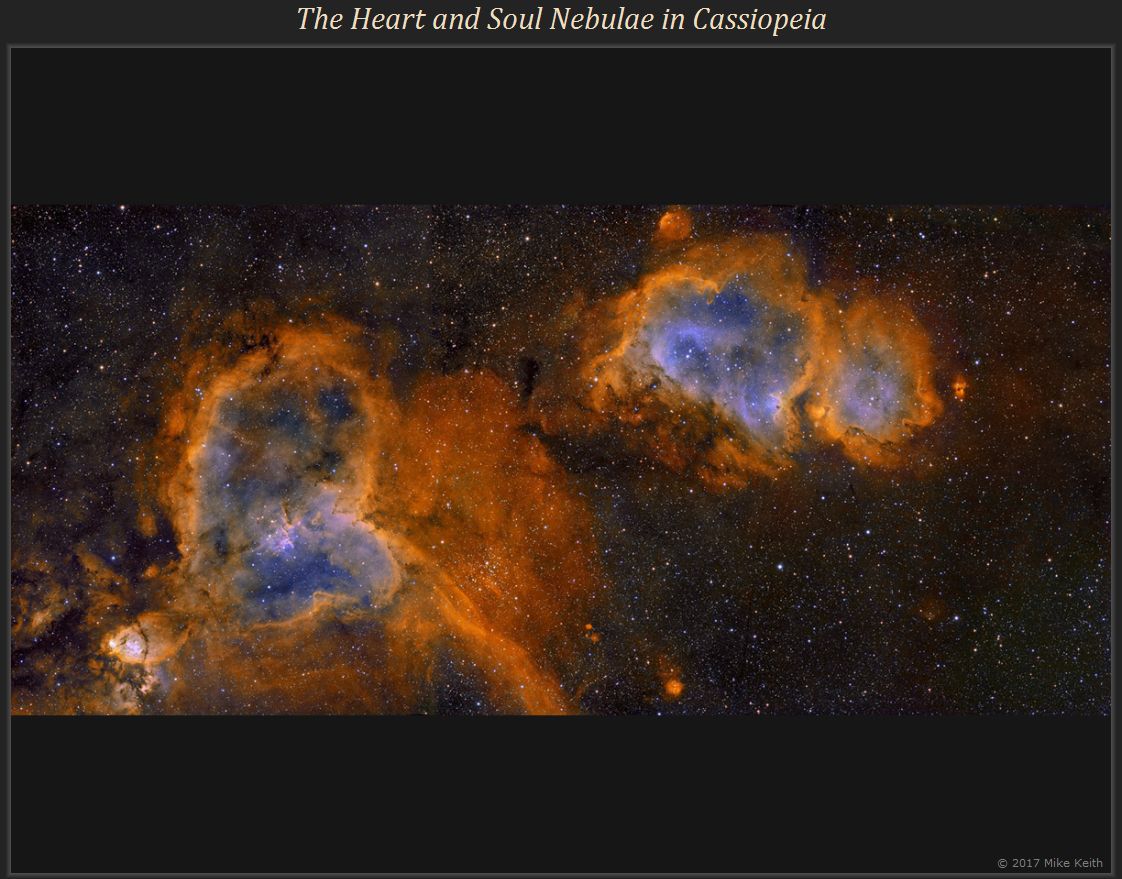
Click here for a higher-resolution image

Click here
for a higher-resolution image
This complicated scene is located in the constellation Cassiopeia about five degrees away from the famous Double Cluster in Perseus. The two large nebulae are the Heart Nebula at the lower left and Soul (or Baby) Nebula at the upper right. To the right of the Baby is small nebula Sharpless 201, and above it is fairly large nearly-spherical nebula Sharpless 198. The bubble near the bottom of the image, to the right of the Heart Nebula, is Sharpless 196, and to its upper left are three smaller bubbles, Sharpless 192, 193, and 194. The small, dim nebula at the lower right is IRAS 02589+6130, which does not appear in any of the common catalogues. The large open cluster at the bottom of the sea of orange in the middle of the image is NGC 1027; the sea of orange itself is known as Simeis 4. Notice the clearly-visible "bridge" at the upper right of Simeis 4 connecting the Heart and Soul. Indeed, it is known that all of this is a single huge nebula complex.
There are two planetary nebulae hiding in this field of view, which can be best seen in the high-resolution image linked to above. An inset at the lower right of the high-resolution image shows the location and a close-up image of planetary IC 289 captured at the same time as the widefield image using a second, longer focal length, telescope. IC 289 is fairly tiny, with a diameter of about 40", but pretty bright at magnitude 13. The second planetary nebula can be easily seen in the high-resolution image but is not annotated. To the upper left of the middle of Simeis 4 (the large sea of orange) is a nearly vertical blue streak. This is elliptical planetary nebula WeBo 1. WeBo stands for Webbink and Bond, the discoverer (in 1995) and confirmer (in 2002) of this planetary nebula.